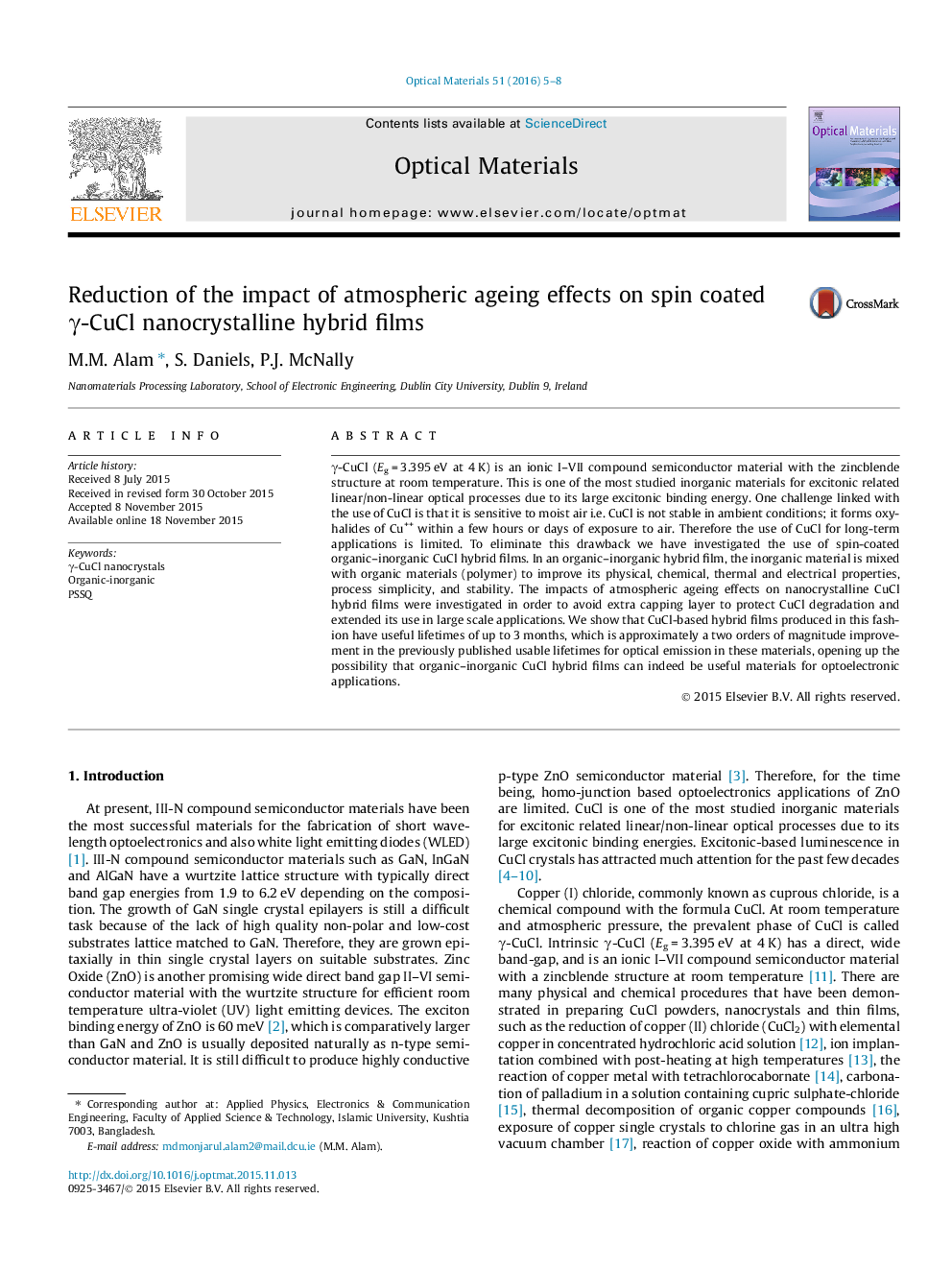| Article ID | Journal | Published Year | Pages | File Type |
|---|---|---|---|---|
| 1493516 | Optical Materials | 2016 | 4 Pages |
•CuCl nanocrystals have been synthesized by chemical precipitation route.•Hybrid films have been developing by using organic solution with CuCl nanocrystals and behave as a single material.•CuCl is a volatile inorganic material but hybrid films are useable long time without any extra capping layer.
γ-CuCl (Eg = 3.395 eV at 4 K) is an ionic I–VII compound semiconductor material with the zincblende structure at room temperature. This is one of the most studied inorganic materials for excitonic related linear/non-linear optical processes due to its large excitonic binding energy. One challenge linked with the use of CuCl is that it is sensitive to moist air i.e. CuCl is not stable in ambient conditions; it forms oxyhalides of Cu++ within a few hours or days of exposure to air. Therefore the use of CuCl for long-term applications is limited. To eliminate this drawback we have investigated the use of spin-coated organic–inorganic CuCl hybrid films. In an organic–inorganic hybrid film, the inorganic material is mixed with organic materials (polymer) to improve its physical, chemical, thermal and electrical properties, process simplicity, and stability. The impacts of atmospheric ageing effects on nanocrystalline CuCl hybrid films were investigated in order to avoid extra capping layer to protect CuCl degradation and extended its use in large scale applications. We show that CuCl-based hybrid films produced in this fashion have useful lifetimes of up to 3 months, which is approximately a two orders of magnitude improvement in the previously published usable lifetimes for optical emission in these materials, opening up the possibility that organic–inorganic CuCl hybrid films can indeed be useful materials for optoelectronic applications.
